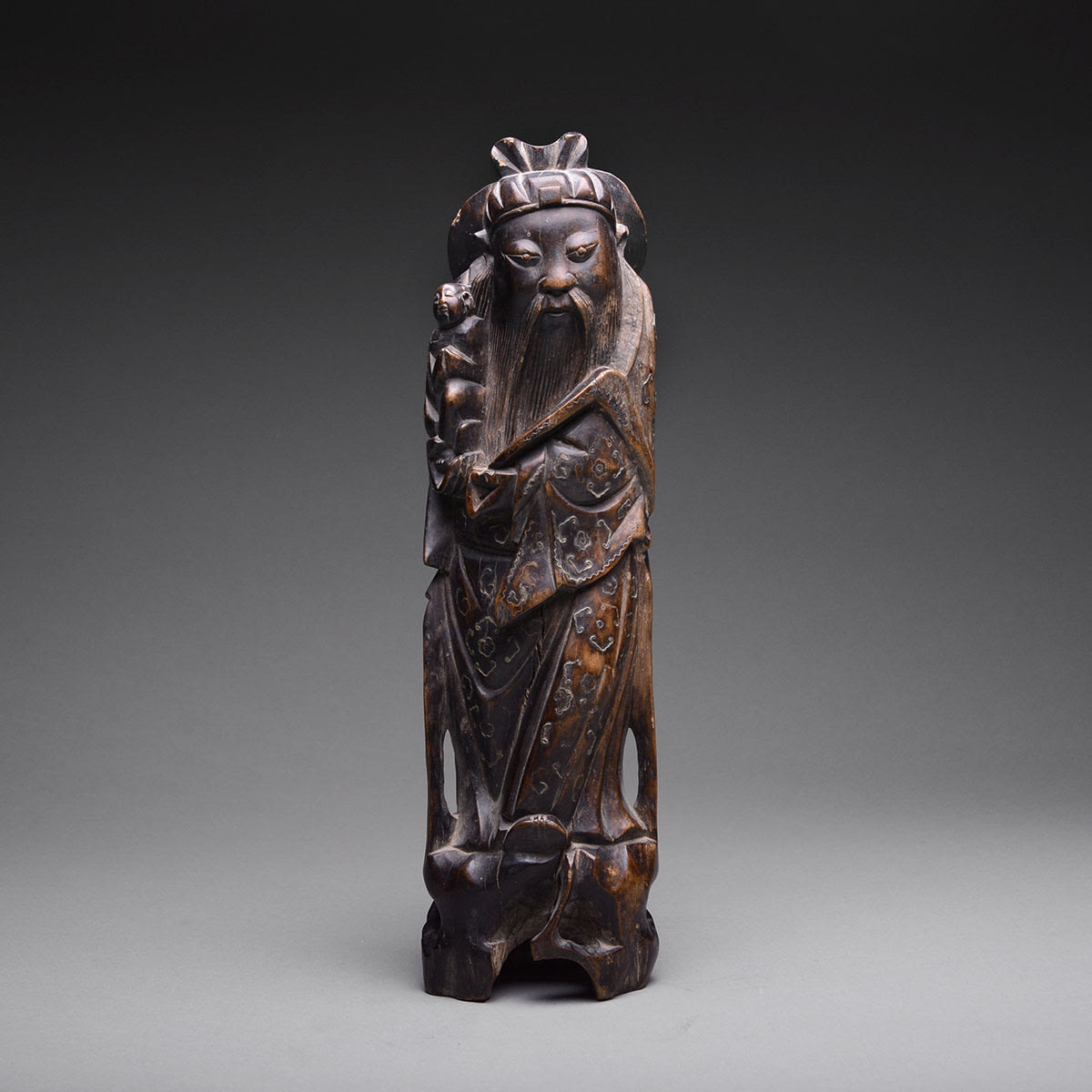Qing Sculpture of a Taoist Immortal, 1644 CE - 1911 CE
Wood
34.9 x 9.5 cm
13 3/4 x 3 3/4 in
13 3/4 x 3 3/4 in
PF.5150
Further images
Standing on a craggy rock with a small figure held in one arm and an axe-shaped emblem in the other arm, this ascetic figure characterizes one of the myriad manifestations...
Standing on a craggy rock with a small figure held in one arm and an axe-shaped emblem in the other arm, this ascetic figure characterizes one of the myriad manifestations of members of the Taoist pantheon which consist of celestial beings, immortals and deities. The figure is hunched forward, and wears a long flowing robe with metal inlaid designs that represent astrological writing. The face is sculpted in a delicate and soft manner with a natural outgrowth of the beard depicted by swerving incised lines. The head is topped by a puffy cap that rises in the center and droops in folds behind the back and shoulders. Taoism is an indigenous religion to China and flourished in conflict with the immigrant religion of Buddhism. However, acknowledged and unacknowledged appropriations of ideas, iconographies, and cultural and religious practice were numerous. Taoism concerns itself with the attainment of immortality--the highest form of personal salvation in which the deathless dwell in a variety of paradises. From that, a complex cosmology concerned with medicine, astrology, and physical cultivation emerged articulating its doctrine in canonical texts and through an entourage of divine beings based, in some cases, on factual historical personages. Perhaps this wooden statue depicts one of the legendary Eight Immortals or the God of Happiness in transit from the mountain paradises to the land of mortals bringing fortune and happiness to all those deserving.







